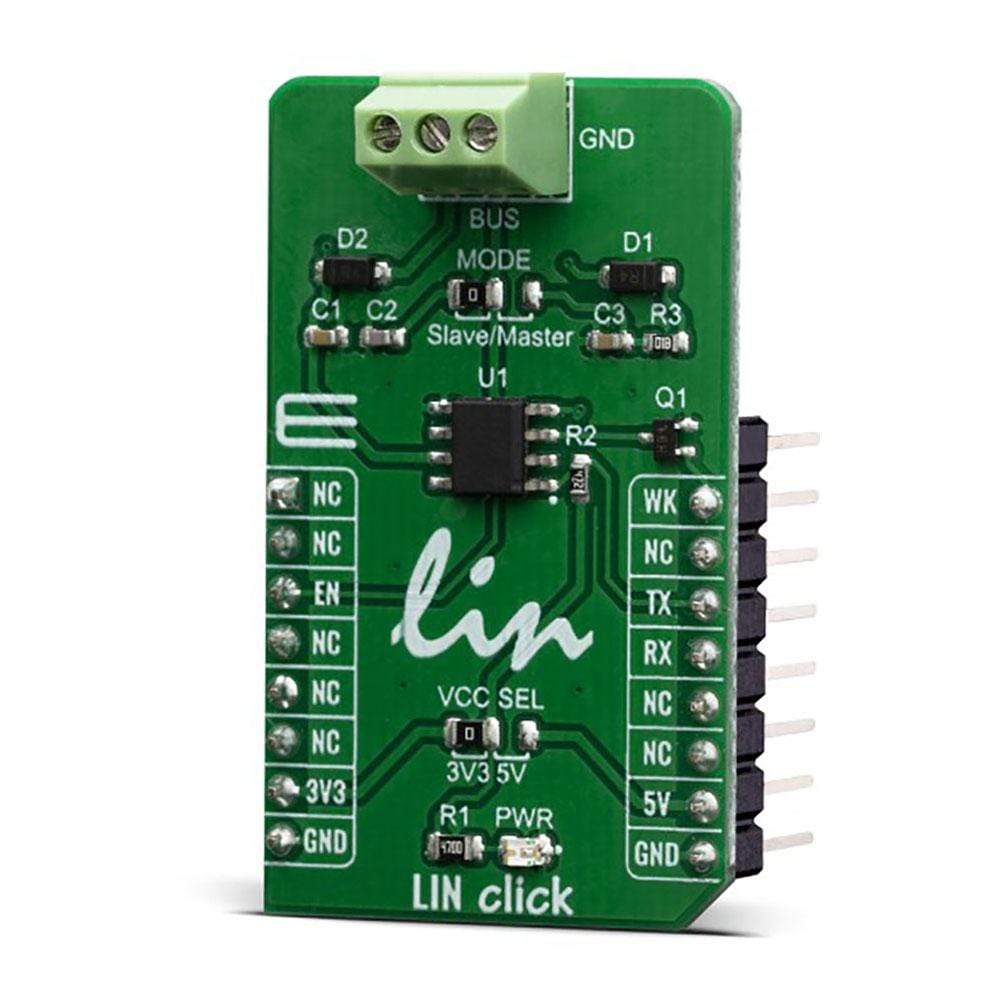
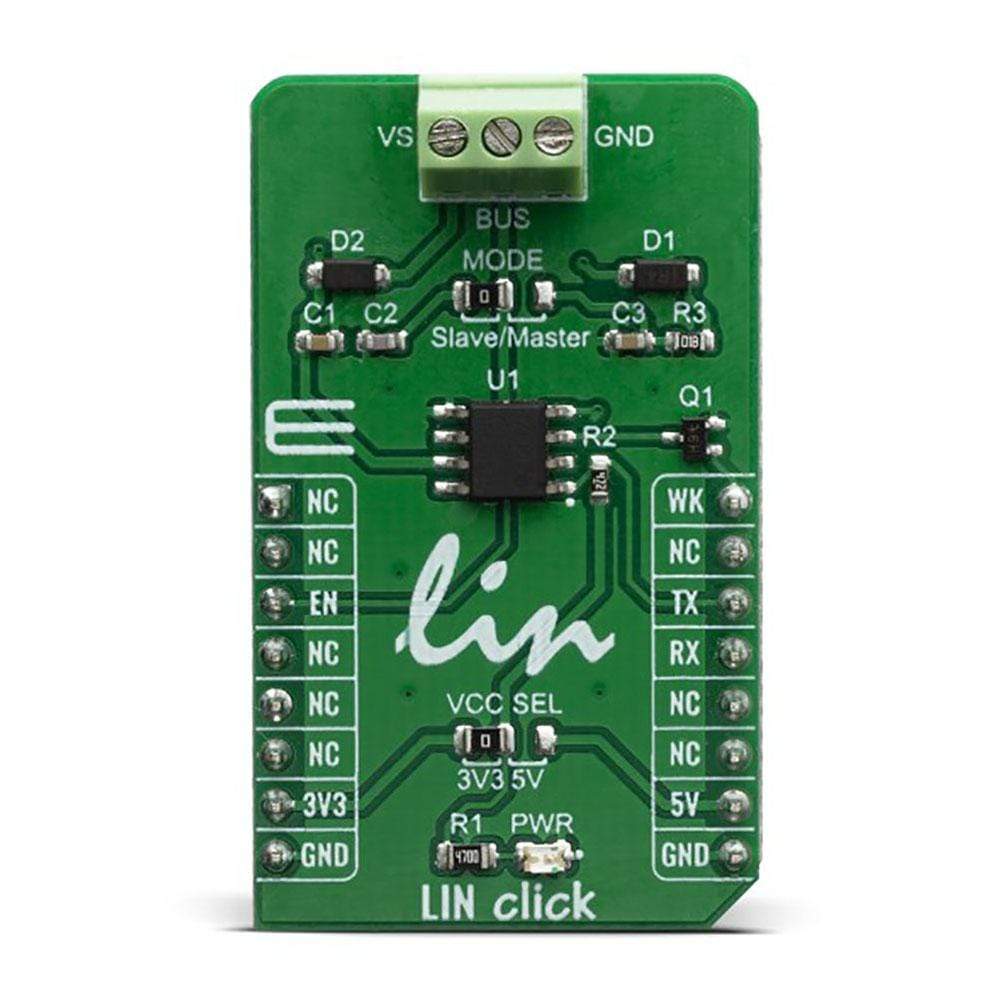
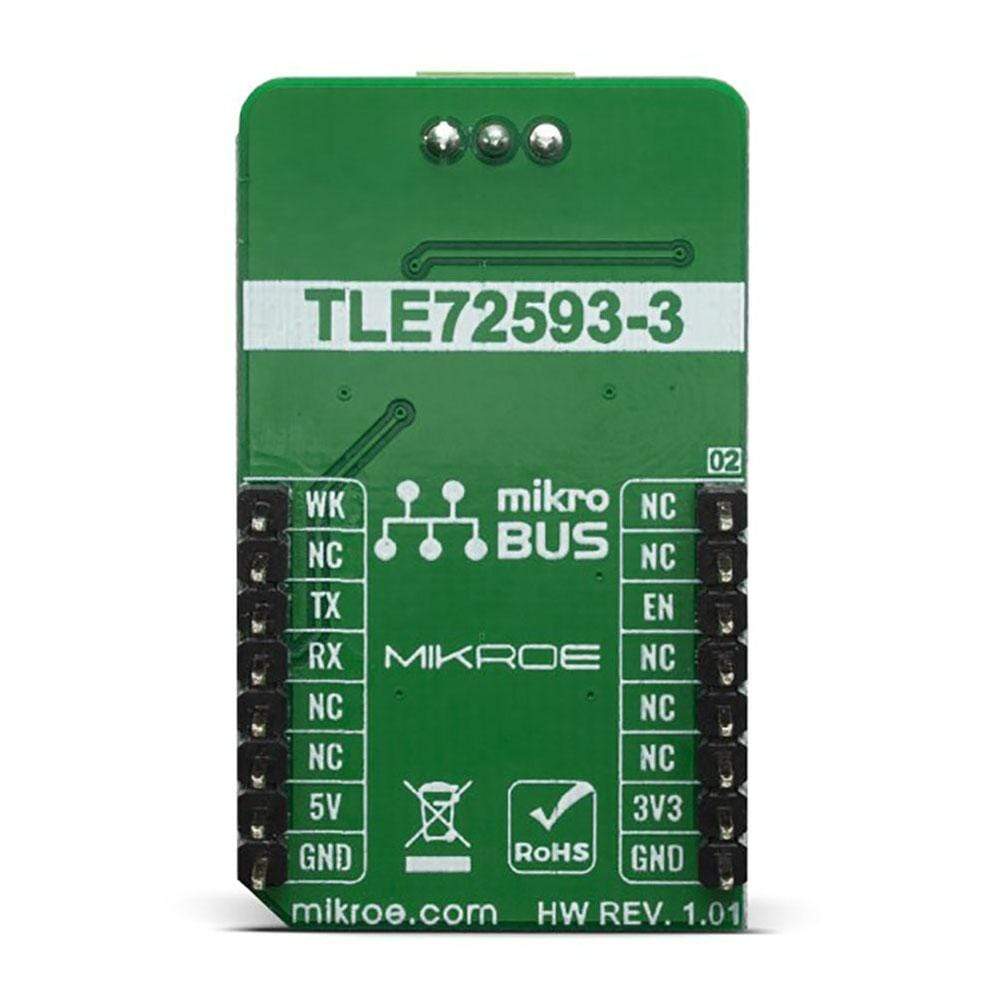
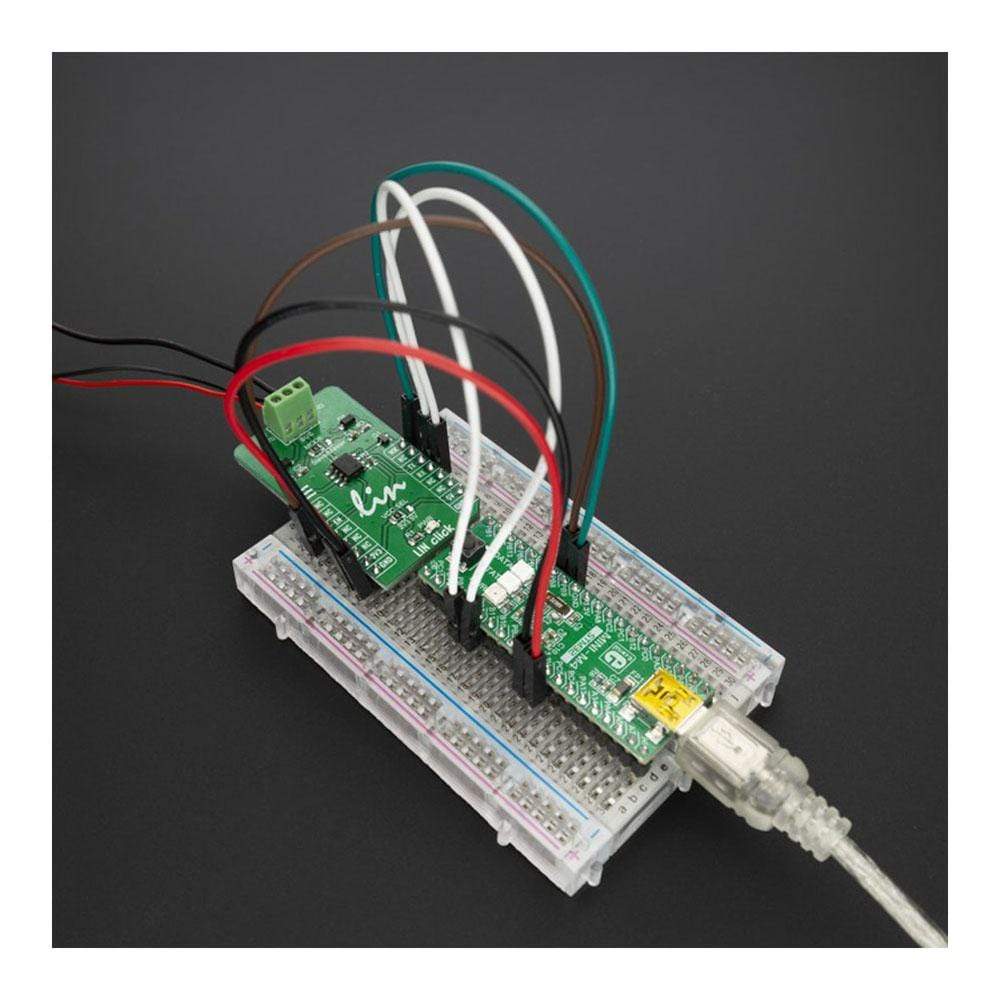

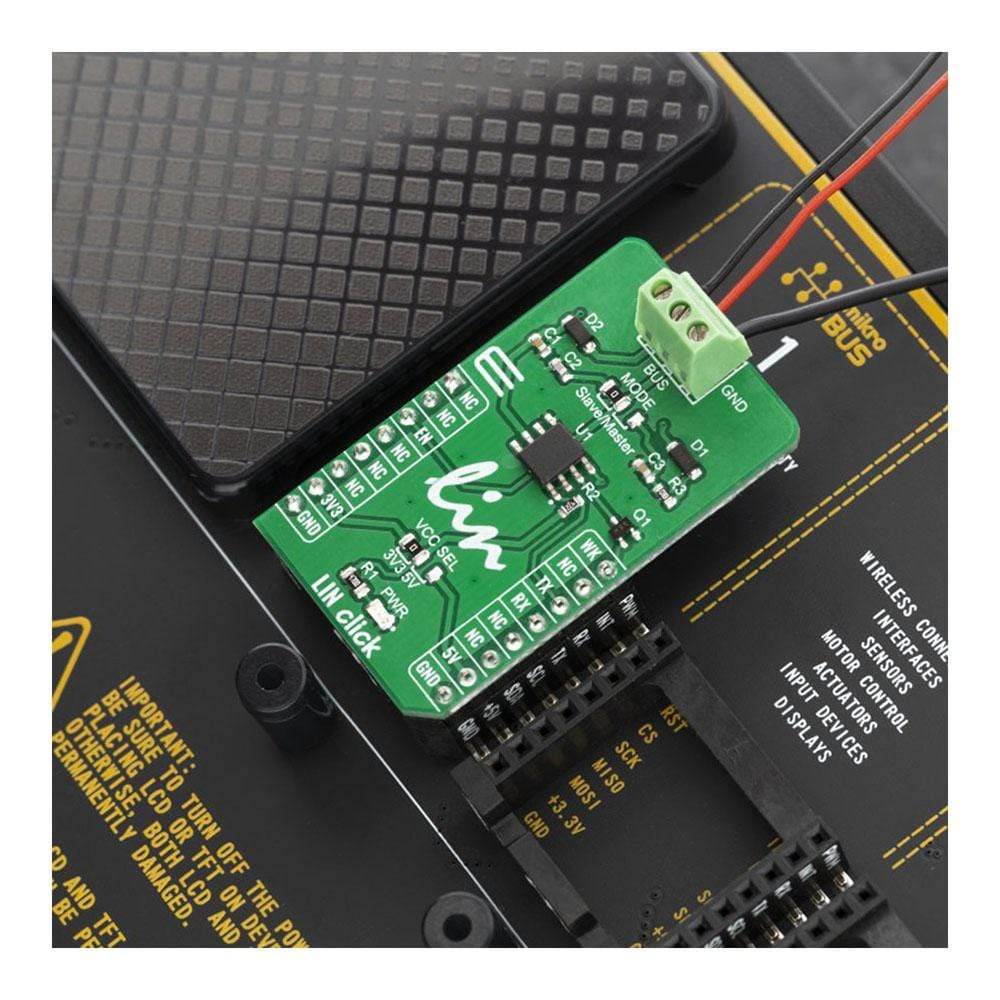
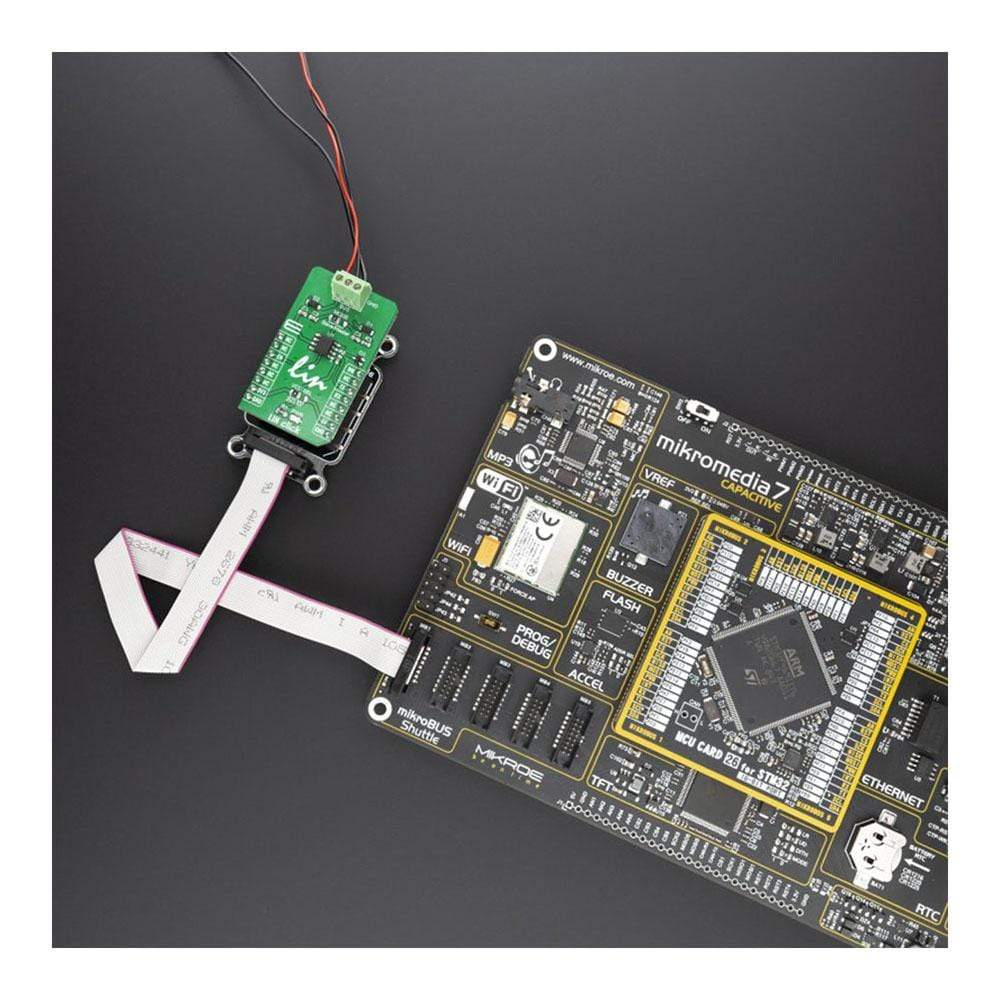
Overview
The LIN Click Board™ features the TLE7259-3GE, a LIN transceiver from Infineon Technologies, with integrated wake-up and protection features. The combination of Slave and Master node in LIN systems, the LIN Click Board™ can be used for automotive applications: body controllers and gateway modules, switch panels, wiper or window lift modules, door and seat control modules and engine management units.
The LIN Click Board™ is supported by a mikroSDK compliant library, which includes functions that simplify software development. This Click Board™ comes as a fully tested product, ready to be used on a system equipped with the mikroBUS™ socket.
Downloads
Das LIN Click Board™ verfügt über den TLE7259-3GE, einen LIN-Transceiver von Infineon Technologies, mit integrierten Aktivierungs- und Schutzfunktionen. Als Kombination aus Slave- und Master-Knoten in LIN-Systemen kann das LIN Click Board™ für Automobilanwendungen verwendet werden: Karosseriesteuerungen und Gateway-Module, Schalttafeln, Wischer- oder Fensterhebermodule, Tür- und Sitzsteuerungsmodule und Motormanagementeinheiten.
Das LIN Click Board™ wird von einer mikroSDK-kompatiblen Bibliothek unterstützt, die Funktionen enthält, die die Softwareentwicklung vereinfachen. Dieses Click Board™ wird als vollständig getestetes Produkt geliefert und ist bereit für den Einsatz auf einem System, das mit der mikroBUS™-Buchse ausgestattet ist.
| General Information | |
|---|---|
Part Number (SKU) |
MIKROE-3816
|
Manufacturer |
|
| Physical and Mechanical | |
Weight |
0.018 kg
|
| Other | |
Country of Origin |
|
HS Code Customs Tariff code
|
|
EAN |
8606018719730
|
Warranty |
|
Frequently Asked Questions
Have a Question?
Be the first to ask a question about this.







